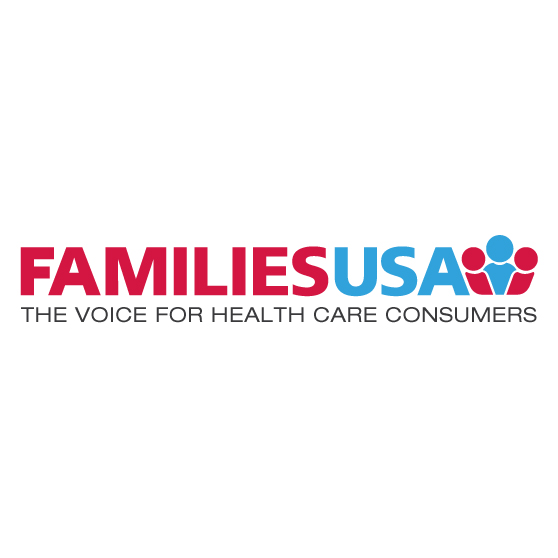How Medicaid Waivers Could Limit Access to Oral Health Care
03.20.2018
A Medicaid “waiver” is a state request to the Secretary of Health and Human Services to waive certain federal requirements of the Medicaid program. Traditionally, Medicaid waivers under section 1115 of the Social Security Act were used to create demonstration projects in states for positive innovations. Recently, however, a number of states have been proposing waivers that would take away coverage.
If your state proposes a Medicaid 1115 demonstration waiver, oral health stakeholders should check for elements that reduce access to oral health care. Some of these include:
- work requirements for receipt of Medicaid,
- premium payments,
- lock-out periods that bar people from coverage if they are late certifying eligibility or paying premiums,
- waiver of requirements to provide Early and Periodic Screening, Diagnosis and Treatment (EPSDT), including oral health care, to 19- and 20-year-olds, and
- complex program requirements that people must meet to “earn” their dental benefits.
Oral health stakeholders can play an important role in promoting good waivers and stopping harmful ones. They can testify to state legislators and administrators as a waiver is being proposed and submit written comments during state and federal comment periods.
Here are some talking points you can use about the effects that harmful requirements may have on oral health. For further information about 1115 waivers, visit Families USA’s Waiver Strategy Center.
Medicaid should promote health and job opportunities, not mandate employment. Work requirements in Medicaid aren’t about work, they are about cutting the program.
There is no evidence that taking health or oral health coverage away from people, or continually threatening them with the loss of coverage, will help them find jobs or gain greater financial independence. Studies show that untreated oral disease adversely affects economic productivity and employment outcomes. Lack of coverage is a tremendous barrier to dental care. Medicaid enrollees with comprehensive dental benefits are three times more likely to get their dental needs met, and also much more likely to get annual dental checkups, than low-income people without dental benefits.
There is evidence that Medicaid, and its coverage of oral health care, helps people work. In comprehensive assessments of Ohio’s and Michigan’s Medicaid expansion programs, the majority of enrollees reported that Medicaid coverage helped them to keep employment and do a good job at work. Enrollees who were unemployed reported that Medicaid makes it easier to look for work because they could get treatment for medical conditions that hinder employment. Michigan participants described how dental work done under the plan’s coverage allowed them to feel more professional when looking for jobs.
Work requirements add a lot of unnecessary bureaucracy and administrative costs, especially considering that most Medicaid beneficiaries already work. The time, resources, and costs to the program involved in notifying people of work requirements, determining who must work and who is exempt, and tracking this over time is truly byzantine. Yet 80 percent of adults with Medicaid live in working families, and most who are not working have a major work impediment, such as poor health, a disability, or caregiving responsibilities. All these administrative costs and incurred to target a sliver of Medicaid enrollees, and yet states may find themselves without enough resources to support services like dental coverage.
Paperwork will push large numbers of people out of coverage, including those who are working. When states add paperwork requirements to Medicaid, enrollment falls dramatically. With work requirements, enrollment will likely fall across the board—including for enrollees who are already working and have to document hours worked; for people with disabilities, caregivers, or others who fall into exemptions but have to prove they are exempt; and for people who are meeting the work requirement and have to continually prove the hours they are working, volunteering, or searching for a job.
For more, see Dee Mahan, “Work Requirements In Medicaid: These Aren’t About Work,” Families USA.
Tying dental access to premium payments for the lowest-income enrollees places their dental coverage at risk—and will consequently hinder their health and employment prospects.
Premiums reduce coverage and access to benefits, including dental care. A multi-state study found that premiums as low as 1 percent of income reduced Medicaid enrollment by up to 15 percent. Tying premium payments to levels of coverage also reduces access to important care. For example, in Indiana, people with incomes below the poverty level receive comprehensive dental benefits only if they pay premiums. In fact, 57 percent of enrollees with incomes below poverty were moved from a comprehensive to a limited benefit package in the first two years of the program, largely because they could not afford the payments and because the process is confusing.
Administering premium payments is costly and not cost-effective. Virginia and Arizona are two states that have priced out the cost of collecting premiums, tracking payments, sending notices, and administering disenrollment and reenrollment. Both found that collecting premiums would actually cost more than the state would save, and would in turn reduce the amount of money in the budget available to provide services like dental care.
Lock-out periods, which bar people from re-enrolling in Medicaid if they are unable to pay their premiums or meet work requirements or promptly complete renewal paperwork, are impermissible under the Medicaid law and counter to the objectives of the Medicaid program. The objective of the Medicaid program, set out in Medicaid law, is to furnish medical assistance to low-income individuals. For this reason, previous administrations did not approve Medicaid lock-outs for people with incomes under 100 percent of the poverty level. Though the current administration recently approved a lock-out, it is not clear that decision will hold up in court.
Lock-outs will disrupt care and lead to poor health outcomes and increased costs. For example, if people cannot afford routine dental care because they are locked out of Medicaid, their incidences of cavities and gum disease will progress. As a result, what might have once required a simple filling may instead require an expensive root canal or emergency treatment for an abscess.
Eliminating EPSDT benefits for 19- and 20-year-olds will take away valuable benefits that help them succeed in life.
Good oral health care helps people succeed in school and in jobs, giving them a healthy start into adulthood. Poor oral health causes people to miss school and work days due to dental pain; in contrast, good oral health helps people maintain employment and increase their earnings.
Some states delay dental benefits until people “earn” coverage. For instance, they require people to adhere to a schedule of preventive visits before they qualify for restorative care. This becomes an obstacle to good dental care:
Providing comprehensive care now will save money later. Iowa learned this lesson in its “wellness program.” As originally constructed, Iowa provided dental exams, preventive care, and some urgent services to all members. But members had to adhere to a schedule of preventive care (check-ups every six months) for at least a year before they could “earn” more services (such as routine fillings). Many Medicaid beneficiaries lost eligibility within a year, so they never received the enhanced services. Program evaluators wrote that the tiered structure “leaves much oral disease untreated that could have been repaired with routine fillings to prevent more serious oral health problems and costs in the future….”
Requirements to “earn” benefits through good behavior may add complexity without improving care. Iowa retreated from its complicated earned benefit structure for dental care after independent evaluations showed that enrollees did not understand it, providers said it limited needed patient care, and few enrollees “earned” the higher tier of benefits that could address important oral health care needs. Iowa has modified its program’s structure to provide comprehensive dental benefits to enrollees the first year, though enrollees still must adhere to a preventive care schedule to retain enhanced benefits.
General Talking Points
(adapt for various waiver elements in your own state)
By providing access to dental care, Medicaid improves overall health and promotes work.
Medicaid is a health insurance program that provides access to vital health and oral health services for millions of working families. More than one in five Americans gets their health care through Medicaid, which includes people ranging from middle-class individuals who have suffered a catastrophic illness, to seniors living in long-term care, to pregnant women and children. As an insurance program designed to promote health, Medicaid should not be changed in ways that reduce health or oral health coverage.
Access to dental services improves overall health. Difficulty eating or sleeping and chronic pain due to dental disease all have significant health implications beyond oral health. Poor oral health is also linked to complications for people with diabetes, heart and lung disease, and to poor birth outcomes.
Access to dental services promotes work. Twenty-nine percent of low-income adults—nearly twice the rate of those with higher incomes—report that the state of their mouth negatively affects their ability to interview for a job. Dental problems frequently result in missed work days. Providing access to dental care can improve overall health and employment prospects.
Tying dental coverage to work requirements, premiums, or earned benefits under Medicaid will reduce coverage, hindering access to care.
Reducing coverage will harm people and increase emergency room costs. Research shows that when states reduce or eliminate adult dental benefits in Medicaid, there are increases in unmet dental care needs as well as in the use of emergency departments for dental problems; at the same time, the use of preventive dental services decreases.
Waiver elements that affect eligibility may create administrative red tape and program costs, making dental care less affordable for states and for hard-working families.
When states implement complicated waivers, they will have less money in the budget to put toward Medicaid dental services. Implementing work requirements, premium payments, lock outs, and earned benefits is expensive and complicated. State Medicaid programs may be less likely to support comprehensive oral health coverage if they have less money to spend on services.
Families who can’t get coverage due to complicated waiver elements will be less able to afford dental care. Cost is the number one reason that 65 percent of low-income people do not see a dentist more frequently. Increasing the out-of-pocket costs people must spend on health care will make it even more difficult for them to afford needed dental care.
See “Why States Should Offer Extensive Oral Health Benefits to Adults Covered by Medicaid.”



